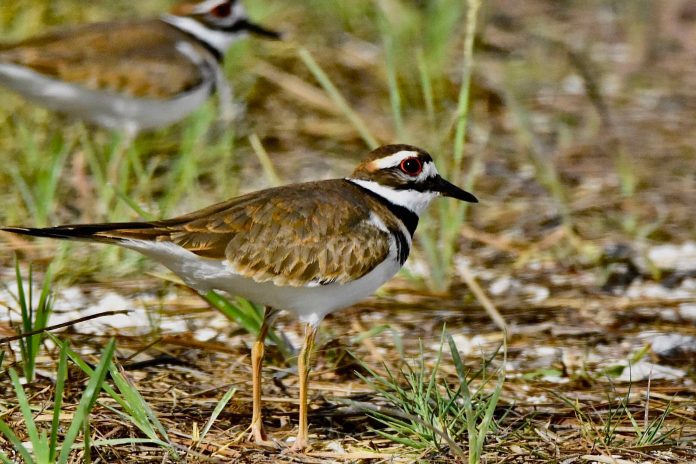
Florida is home to an abundant and diverse array of species. This is especially true for the number of unique bird species that we can encounter throughout the state. One of the most interesting and adorable birds you may observe is the killdeer.
Killdeer are fascinating birds because they are shorebirds that you can find thriving away from the ocean and within inland communities instead of strictly near the water. In fact, killdeer are one of the least water-associated of all the shorebirds. Similar to the snowy and piping plovers who are often found running around the beach, the killdeer are equally a joy to view. These year-round residents are widely distributed across North America and can be found throughout Florida. A portion of the state’s population is also considered migratory.
Killdeer prefer habitats that are on open ground spaces with low vegetation, sand or gravel. When inland, they often choose to live around buildings, golf courses and in parking lots. They also frequent wetlands, mudflats, pastures and grasslands.
They are small white birds with brown, black and tan plumage. They have a round head and beady, black eyes encircled with a red hue. They are slender in shape with a short bill that is similar to other plovers. They average a length of 8-11 inches long. Killdeer are also identifiable by the double black bands around their neck. They have short, fast-moving legs and take flight quickly with their wide wings when threatened or disturbed. Killdeer are very cautious, shy yet inquisitive animals.
They are opportunistic ground foragers and have a diet that consists almost entirely of insects and small crustaceans, but they will also eat berries and seeds. After killdeer have mated, the pair will often scoop out a shallow nest on the ground made of rocks and sticks. The female killdeer will then lay an average of four to six eggs. Both parents participate in incubation of the eggs. Killdeer may have up to two broods together a year and can find new partners in the following year.
It is crucial to their survival that we are aware of ground-nesting and ground-dwelling species. Killdeer and their fondness to live in human-modified habitats make them vulnerable to suffering from habitat loss, degradation, traffic incidents and pesticide poisoning. Remember to help keep Florida wild by respecting wildlife and keeping their habitats free of unnecessary chemicals that are a danger to our treasured biodiversity.
